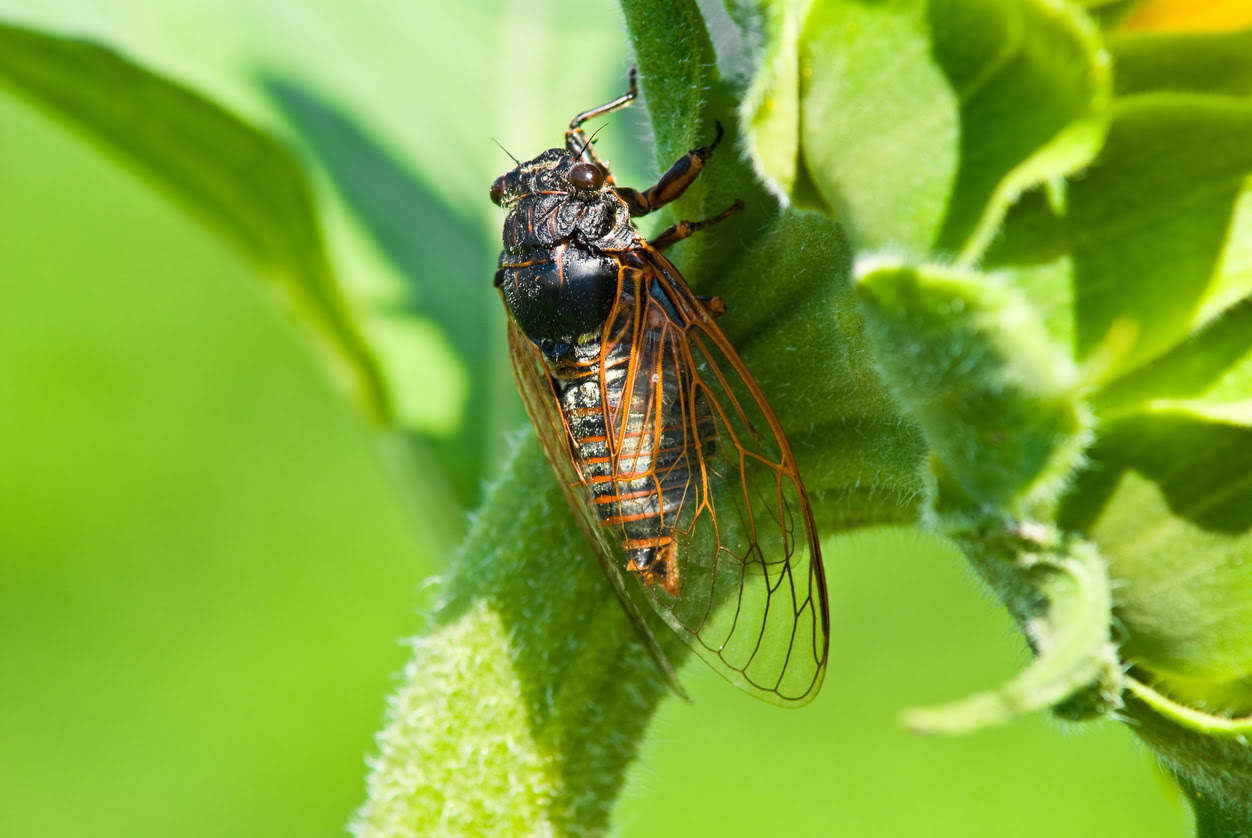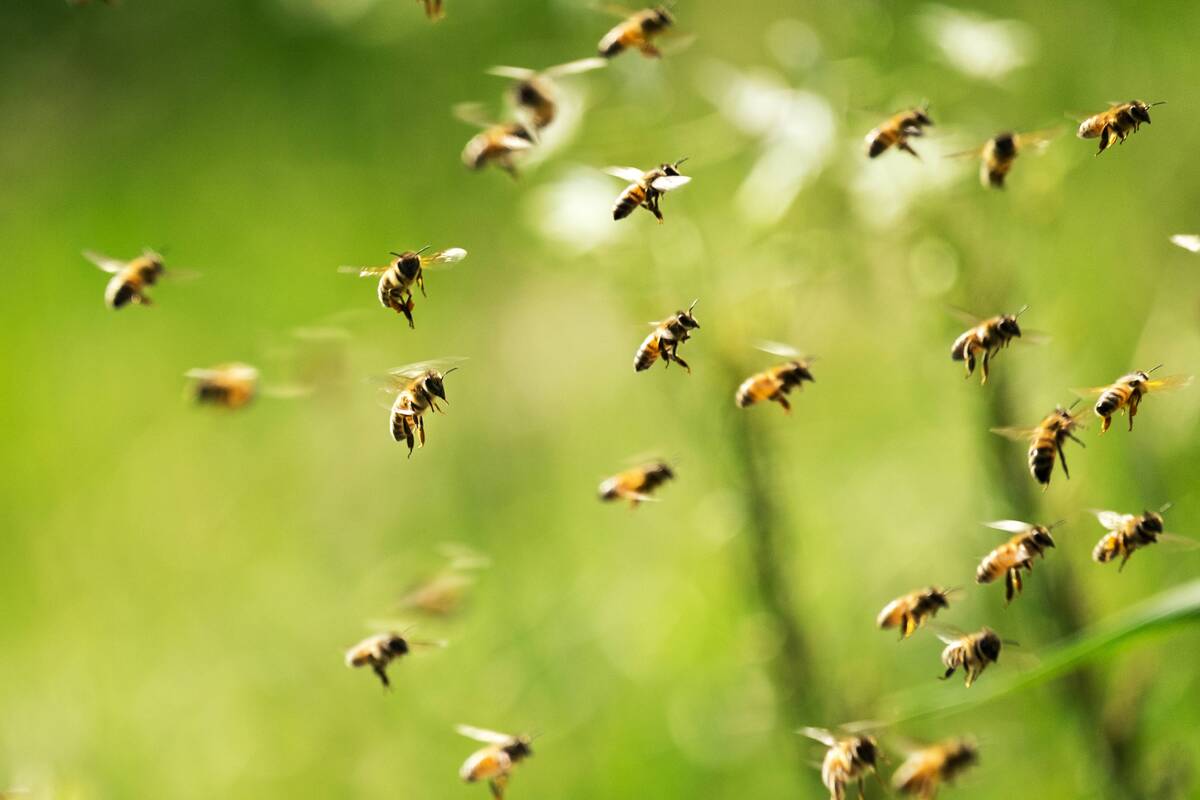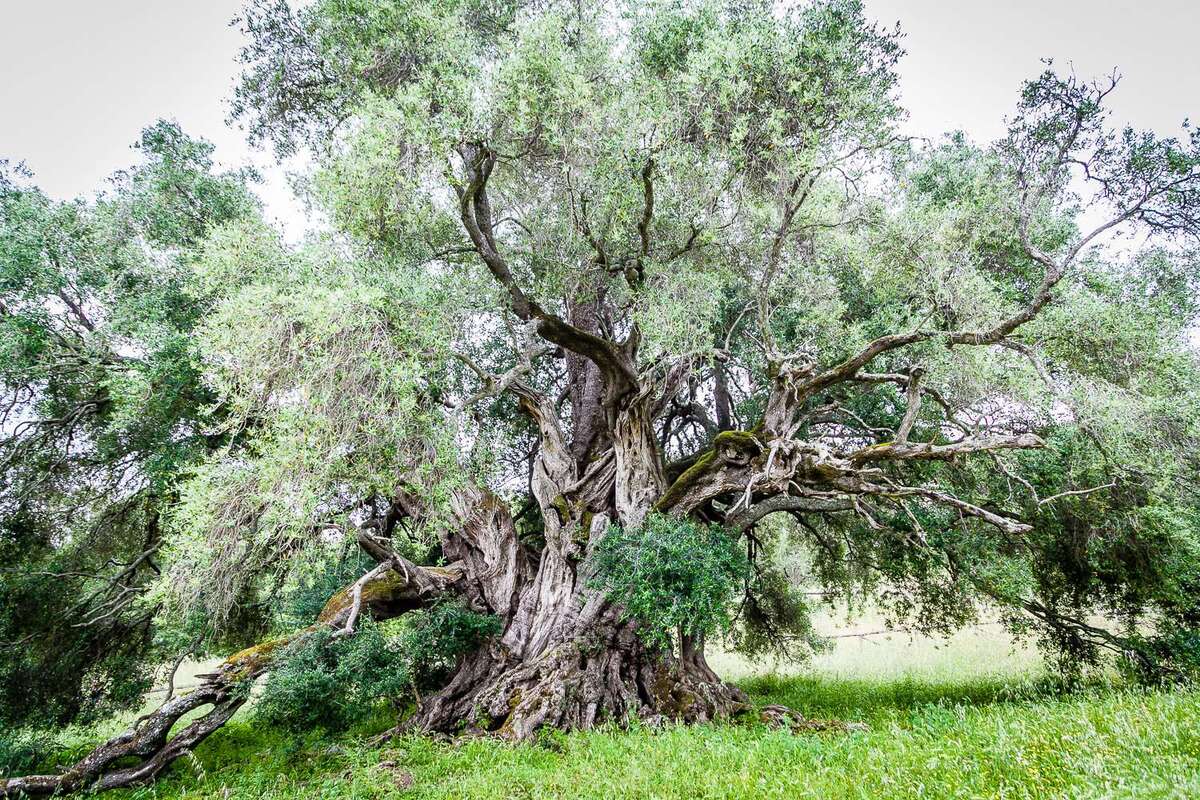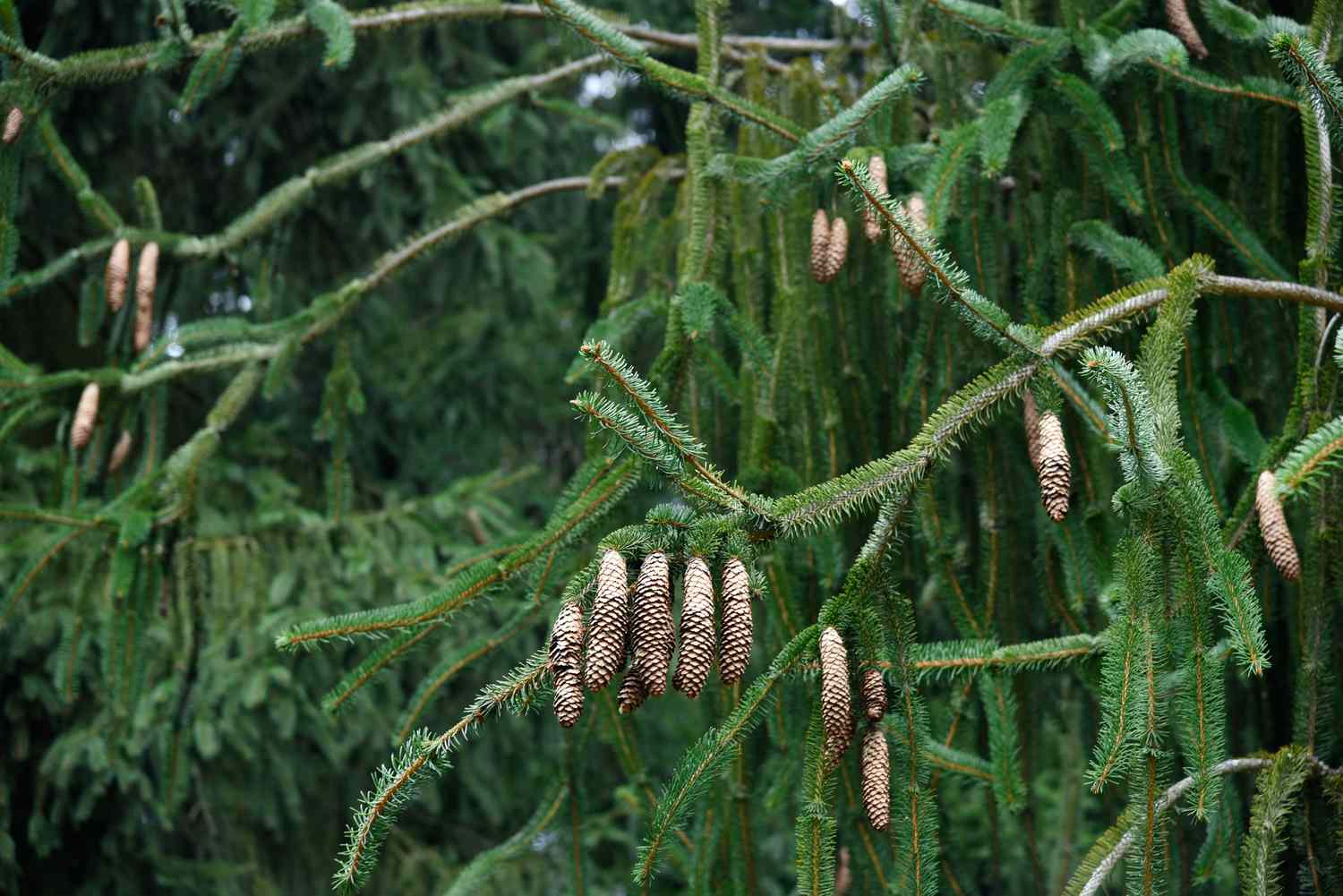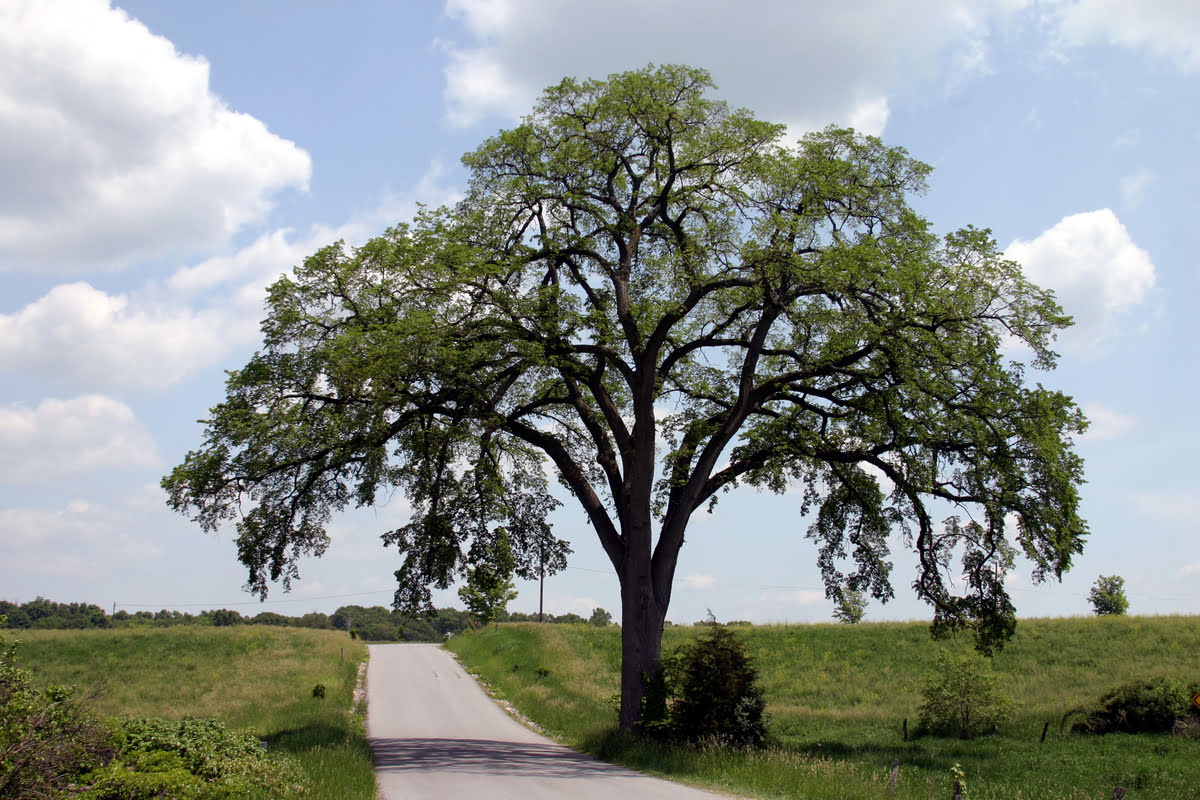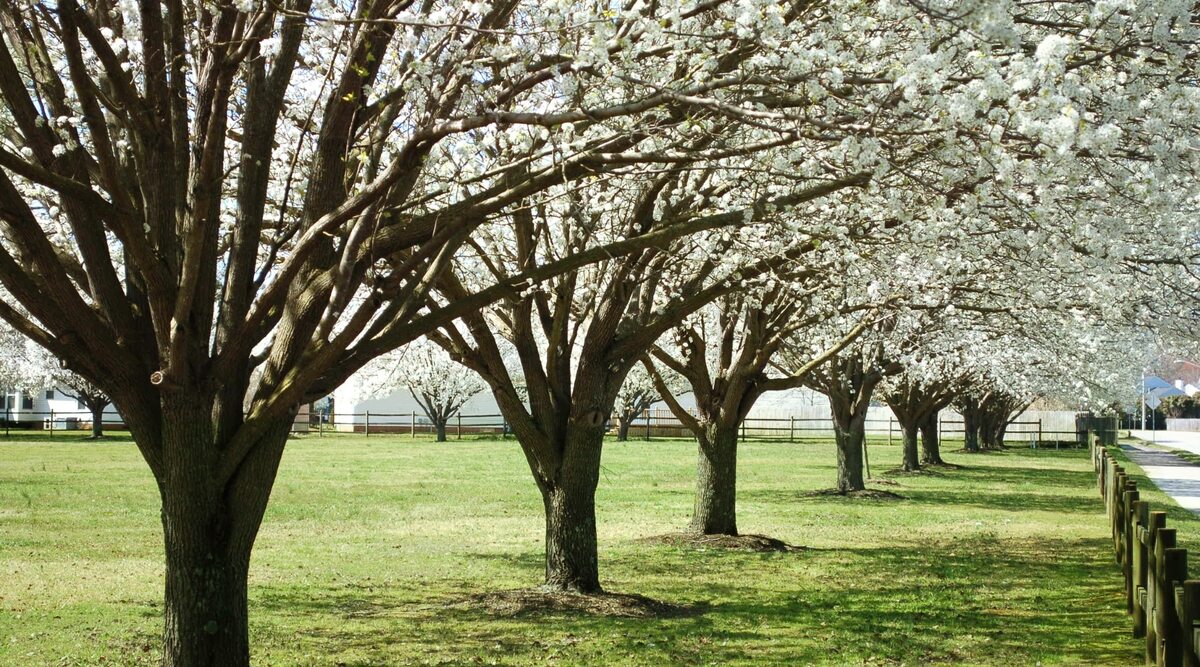Home>Gardening News and Trends>Latest News>Where Do Insects Live
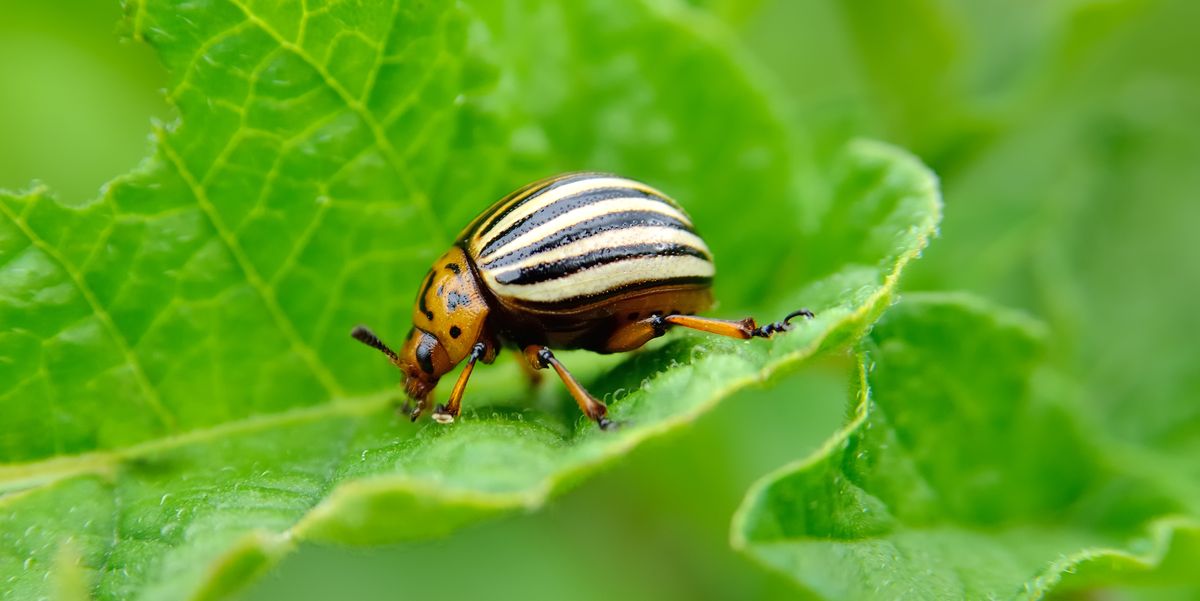

Latest News
Where Do Insects Live
Modified: January 22, 2024
Discover the Latest News about Where Insects Live and Uncover the Fascinating Habitats of These Tiny Creatures
(Many of the links in this article redirect to a specific reviewed product. Your purchase of these products through affiliate links helps to generate commission for Chicagolandgardening.com, at no extra cost. Learn more)
Table of Contents
Introduction
Welcome to the fascinating world of insects! These small creatures have managed to adapt and thrive in a wide range of habitats across the globe. From the depths of the ocean to the highest mountaintops, insects have conquered almost every corner of our planet. Their ability to survive and reproduce in such diverse environments is a testament to their resilience and evolutionary success.
Insects are the most abundant and diverse group of animals on Earth, with over a million known species and countless more yet to be discovered. They can be found in virtually every ecosystem, from deserts to rainforests, and from the tropics to the polar regions.
Terrestrial Habitats
Insects are commonly found in terrestrial habitats, which include forests, grasslands, and deserts. In forest ecosystems, insects play crucial roles in nutrient recycling, pollination, and decomposition. They can be found inhabiting tree canopies, leaf litter, and even underground.
Freshwater Habitats
Insects have also adapted to freshwater habitats such as rivers, lakes, and ponds. They can be found in various niches within these habitats, including the water surface, the bottom sediments, and even in submerged vegetation. Aquatic insects, like dragonflies and mayflies, undergo unique life cycles and have specially adapted body structures to survive in water.
Marine Habitats
If you thought insects were confined to land and freshwater, think again! Some insects have managed to colonize marine habitats, such as coastal areas and salt marshes. These insects have developed adaptations to tolerate high salinity levels and live in environments with constantly changing water levels.
Forest Habitats
…
Terrestrial Habitats
Insects are highly adaptable, and they have successfully colonized various terrestrial habitats. One of the most well-known insect-rich habitats is the forest. Within the forest ecosystem, insects play vital roles in ecological processes such as nutrient cycling, pollination, and decomposition. They inhabit different parts of the forest, from the towering tree canopies to the leaf litter on the forest floor.
In the tree canopies, insects like beetles, ants, and caterpillars make their homes. They feed on leaves, bark, and sap, and some even create intricate tunnels and galleries within the tree trunks. These insects play an essential role in controlling pest populations and shaping the forest ecosystem.
On the forest floor, the leaf litter provides a haven for insects such as millipedes, centipedes, and ground beetles. These decomposers break down organic matter, facilitating nutrient recycling and soil formation. Additionally, the leaf litter acts as insulation, providing protection and moisture for insects during harsh weather conditions.
Another terrestrial habitat frequented by insects is grasslands. In grassland ecosystems, insects are abundant and diverse. They play crucial roles in pollinating flowering plants and maintaining the balance of herbivore populations. Various species of grasshoppers, butterflies, and bees can be found in grasslands, utilizing the open spaces and the wealth of nectar-producing plants.
Deserts, although seemingly inhospitable, also house a myriad of insect species. Insects in desert habitats have developed unique adaptations to survive the extreme conditions, such as sandy soils, high temperatures, and scarce water resources. Examples of desert insects include beetles, ants, and spiders, which have efficient mechanisms for conserving water and withstanding the harsh desert environment.
Even urban environments have become habitats for insects. Cities provide a plethora of resources for insects, such as food waste, gardens, and artificial structures. Common urban insects include cockroaches, flies, and mosquitoes. These insects have adapted to urban environments and are often seen as pests, requiring management and control.
Overall, insects have found their place in a wide range of terrestrial habitats, showcasing their remarkable adaptability and resilience. Whether it’s forests, grasslands, deserts, or urban areas, insects continue to thrive and perform essential ecological roles.
Freshwater Habitats
In addition to terrestrial environments, insects have successfully colonized freshwater habitats such as rivers, lakes, and ponds. These aquatic ecosystems provide a unique set of challenges and opportunities for insects, leading to the development of diverse adaptations and specialized lifestyles.
One of the most iconic groups of insects found in freshwater habitats is the Odonata, which includes dragonflies and damselflies. These insects have elongated bodies, large compound eyes, and powerful wings that enable them to fly swiftly over the water surface. Dragonflies and damselflies undergo incomplete metamorphosis, with their immature nymph stages living underwater and preying on smaller aquatic organisms.
Another fascinating group that thrives in freshwater ecosystems is the Ephemeroptera, commonly known as mayflies. Mayflies have a unique life cycle, spending most of their lives as aquatic nymphs before emerging as short-lived adults. These insects are important indicators of water quality, with their presence inluding that the ecosystem is healthy and diverse.
Caddisflies (Trichoptera) are another common sight in freshwater habitats. The larvae of caddisflies build protective cases using silk and various natural materials, providing them with shelter and camouflage while they graze on algae and detritus. Some caddisflies are important indicators of pollution, as they are sensitive to changes in water quality.
Water beetles (Coleoptera) are abundant in freshwater habitats, with a wide range of species adapted to different niches within these environments. Some water beetles are skilled swimmers, while others are capable of diving or even walking on the water’s surface using specialized hydrophobic structures on their legs. Water beetles are voracious predators, feeding on smaller invertebrates and contribute to the cycling of organic matter in freshwater ecosystems.
Freshwater habitats also provide a breeding ground for mosquitoes (Diptera). While some mosquito species are nuisance pests that can transmit diseases, it’s important to note that not all mosquitoes are harmful. Many species play a significant role in aquatic food chains, serving as a food source for fish and other aquatic organisms.
Overall, freshwater habitats offer a rich and diverse environment for insects to thrive. From dragonflies and mayflies to caddisflies and water beetles, these insects have developed unique adaptations to navigate, feed, and reproduce in freshwater ecosystems. By studying and understanding these insects, we can gain important insights into the health and functioning of freshwater habitats.
Marine Habitats
When we imagine marine habitats, we often think of fish, coral reefs, and dolphins. However, insects have also managed to find their way into these salty environments. Although not as diverse or abundant as in terrestrial or freshwater habitats, some insects have successfully colonized coastal areas, estuaries, and salt marshes.
One of the most well-known insects found in marine habitats are beach-dwelling insects. These insects, such as sand flies and beach hoppers, have adapted to the constant shifting of sands and the harsh conditions of coastal environments. They play important roles in the decomposition and nutrient cycling of organic matter, as well as being a food source for shorebirds and other coastal animals.
Another group found in marine habitats is the wrack insects. These insects, including beach beetles and fly larvae, live in the seaweed and debris that washes up onto shorelines. They are scavengers, feeding on decaying plant material and contributing to the decomposition process. Wrack insects play a vital role in recycling nutrients and maintaining the balance of marine ecosystems.
Salt marshes are unique habitats where insects have found a way to survive despite the challenging environment. Salt marsh mosquitoes, for example, have developed adaptations to tolerate high salinity levels and breed in the brackish water found in these marshes. These mosquitoes serve as important food sources for various animals, contributing to the overall biodiversity of the salt marsh ecosystem.
In addition to these specialized marine habitats, some insects have also managed to inhabit mangrove forests. Mangroves provide unique ecological niches for insects, with their complex root systems and saline conditions. Insects such as mangrove ants and leafhoppers have adapted to the mangrove environment, playing roles in nutrient cycling and maintaining the health of these vital coastal ecosystems.
While insects may not be as prominent in marine habitats as they are in other environments, their presence and contributions should not be overlooked. These resilient insects have found ways to adapt and survive in challenging salty conditions, helping to maintain the balance of marine ecosystems and supporting the overall biodiversity of coastal areas.
Forest Habitats
Forests are vast and diverse ecosystems teeming with life, and insects play a crucial role in the functioning and biodiversity of these habitats. Insect species have successfully adapted to various niches within forests, from the towering canopies to the leaf litter on the forest floor.
The tree canopies in forests provide a rich and diverse habitat for insects. Many insects, such as beetles, ants, and caterpillars, make their homes in the branches and leaves of trees. These insects feed on plant tissues, sap, or other smaller organisms that inhabit these parts of the forest. They play essential roles in nutrient cycling, pollination, and even in controlling pest populations.
Leaf-dwelling insects, like some species of grasshoppers and katydids, have evolved to blend in with their environment, relying on camouflage to avoid predators. Their specialized feeding habits, often specific to certain plant species, contribute to the complex interactions within forest ecosystems.
In the understory and shrub layers, insects like butterflies and moths can be found, utilizing the abundance of nectar-producing flowers as sources of food and sites for egg-laying. Some butterflies have developed fascinating relationships with certain plant species, relying on them as crucial hosts for their caterpillar larvae.
The forest floor, covered in a layer of decaying leaves and organic matter, is a haven for a multitude of insect species. Decomposers, such as beetles, millipedes, and springtails, play pivotal roles in breaking down dead plant material, facilitating nutrient recycling, and enriching the soil. They also serve as a vital food source for other organisms within the forest ecosystem.
In addition to these hidden habitats within the forest, insects also inhabit the soil and below-ground environment. Termites are well-known for their ability to break down and recycle wood and plant material, helping to shape the structure and dynamics of forests. Ant colonies can create extensive networks underground, influencing nutrient redistribution and the composition of plant communities.
Forests provide a diverse range of habitats for insects, allowing them to fill ecological niches and fulfill essential roles in these ecosystems. Whether in the canopies, understory, leaf litter, or below ground, insects contribute to nutrient cycling, pollination, decomposition, and pest control, maintaining the health and balance of forest habitats.
Grassland Habitats
Grasslands are vast and open habitats dominated by a variety of grasses and herbaceous plants. These ecosystems support a wide range of insect species that have adapted to the unique conditions and resources available in grassland habitats.
One of the key roles that insects play in grasslands is pollination. Butterflies, bees, and other nectar-feeding insects are important pollinators for many flowering plants in grassland ecosystems. These insects visit flowers to feed on nectar and inadvertently transfer pollen from one flower to another, enabling the plants to reproduce and produce seeds.
Grasshoppers and crickets are commonly found in grasslands, using their powerful hind legs to jump and move through the vegetation. These herbivorous insects feed on grasses and other plant material, playing a role in nutrient cycling and regulating plant populations. They can also serve as an important food source for predators, such as birds and mammals.
Grasslands also provide breeding grounds for a variety of butterflies and moths. Many species of butterflies lay their eggs on specific host plants, which serve as food sources for caterpillar larvae. These larvae play a crucial role in herbivory, consuming plant material and promoting new growth in the grassland ecosystem.
Other insect species, such as ground beetles and spiders, inhabit the soil and leaf litter of grasslands. These predatory insects help control populations of herbivorous insects and contribute to the overall balance of the grassland ecosystem. They also play a crucial role in the decomposition process, breaking down organic material and enriching the soil.
Grassland habitats are also home to a diverse range of grasshoppers and dragonflies. These insects have evolved remarkable adaptations, such as cryptic coloration and specialized wings, to blend in with their surroundings and avoid predation. Their presence in grasslands is essential for maintaining biodiversity and ecosystem functioning.
From pollinators to herbivores to predators, insects in grasslands are vital components of the ecosystem. They contribute to processes such as pollination, herbivory, nutrient cycling, and pest control. The delicate balance among these insect populations is crucial for the health and sustainability of grassland habitats.
Desert Habitats
Deserts are harsh and unforgiving environments, characterized by extreme temperatures, aridity, and sparse vegetation. Despite these challenges, insects have adapted to survive and thrive in desert habitats by developing unique physiological and behavioral adaptations.
One of the remarkable adaptations of desert insects is their ability to conserve water. Many insects have evolved specialized structures and behaviors to minimize water loss. They have impermeable exoskeletons, efficient respiratory systems, and may even go into a state of dormancy during periods of extreme drought.
Ants are commonly found in desert habitats, with some species creating extensive underground nests to escape the harsh climatic conditions. They scavenge for food during cooler periods and store it in their nests, ensuring their survival during times of scarcity.
Beetles are another group of insects that have successfully colonized deserts. They have evolved a hard exoskeleton and can tolerate extreme temperatures. Darkling beetles are common desert dwellers, with their coloration allowing them to absorb heat during the cold nights, while their behavior and appearance help them avoid predators during the day.
Spiders, scorpions, and other arachnids are well-adapted to desert life. Their ability to survive long periods without food or water makes them well-suited for these arid environments. These arthropods are efficient predators, preying on smaller insects and maintaining the delicate balance of desert ecosystems.
Some insects, like the desert locusts, have developed remarkable migratory behavior to survive in desert habitats. They can form swarms of millions, traveling long distances in search of food and water. Their population dynamics are closely tied to rainfall patterns, as they take advantage of breeding opportunities after periods of sufficient rainfall.
In desert ecosystems, insects interact with plants, aiding in pollination and acting as herbivores. There are specialized pollinator beetles and bees that visit desert plants, such as cacti and desert wildflowers, playing essential roles in the plant’s reproduction. Other insects, like grasshoppers and caterpillars, feed on the sparse vegetation, contributing to nutrient cycling and regulating plant populations.
The resilience and adaptability of desert insects highlight their remarkable ability to survive and thrive in some of the harshest environments on Earth. They play crucial roles in desert ecosystems, contributing to pollination, nutrient cycling, and serving as an important food source for other organisms. Their ability to endure and adapt to extreme conditions is a testament to the incredible diversity and tenacity of insects.
Urban Habitats
As humans continue to expand and build cities, the urban environment has become an unexpected habitat for insects. Urban areas provide a unique set of resources and challenges for insects, leading to the development of specific adaptations and behaviors that allow them to survive and thrive in these man-made environments.
One of the most common insects in urban habitats is the cockroach. Cockroaches are highly adaptable and have the ability to withstand a wide range of environmental conditions, making them well-suited for urban environments. They can find shelter and food in residential and commercial buildings, and their presence often poses sanitation issues.
Flies, including house flies and fruit flies, are also prevalent in urban habitats due to the availability of food waste and organic material. These insects play a vital role in nutrient recycling, as they break down organic matter and facilitate decomposition.
Mosquitoes are another notable insect group in urban areas. They breed in stagnant water sources such as birdbaths, puddles, and even blocked gutters. Mosquito control strategies are implemented to prevent the spread of diseases, making them a significant concern for public health in urban environments.
However, not all insects in urban areas are considered pests. Bees and butterflies, for example, can be found in urban gardens and green spaces, where they rely on the abundance of flowering plants for nectar and pollen. These insects are essential pollinators, contributing to the growth and diversity of urban flora.
Ants are also commonly found in urban habitats, with some species forming large colonies near human settlements. While some ants can be a nuisance, invading homes and damaging structures, others play important roles in nutrient cycling and predation, helping to control other insect populations.
Urban habitats also provide opportunities for invasive insect species to establish and thrive. These invasive species can outcompete native species, disrupt ecosystems, and cause economic damage. Effective pest management strategies are crucial in urban areas to mitigate the negative impacts of these invasive insects.
Overall, urban habitats provide a range of resources and challenges for insects. While some insects become pests, there are also important ecological roles played by insects in urban environments, including pollination, nutrient cycling, and decomposition. Balancing the needs of human populations with the management of insect populations is a crucial task towards creating sustainable and harmonious urban ecosystems.
Agricultural Habitats
Agricultural habitats, such as farms and cultivated fields, offer a unique environment for insects. These habitats provide an abundance of food resources in the form of crops, making them attractive to a wide range of insect species. While some insects can be detrimental as agricultural pests, others play essential roles in pollination and natural pest control within these habitats.
One of the primary concerns for farmers is the presence of agricultural pests that can cause significant damage to crops. Insects such as aphids, caterpillars, and beetles can feed on plant tissues, reducing crop yields and quality. Farmers often employ various methods, including the use of insecticides and integrated pest management techniques, to control and manage these pests.
However, not all insects in agricultural habitats are pests. Beneficial insects, such as bees and butterflies, are crucial for pollinating crops. Pollinators play a vital role in the reproduction of many flowering plants, including fruit trees and vegetables. Without their assistance, many agricultural systems would suffer from low yields and decreased biodiversity.
In addition to pollinators, insect predators and parasitoids provide natural pest control services within agricultural habitats. Ladybugs, lacewings, and predatory wasps are examples of insects that prey on pest species, helping to keep their populations in check. These natural enemies reduce the reliance on chemical insecticides and promote sustainable farming practices.
In some cases, farmers intentionally introduce beneficial insects for biological control. For example, releasing a specific species of parasitic wasp to control caterpillars or using nematodes to combat soil-dwelling pests. These biological control methods offer an environmentally friendly alternative to chemical insecticides, reducing the impact on both the agricultural ecosystem and human health.
Furthermore, insects play a crucial role in nutrient recycling within agricultural habitats. Decomposers, such as dung beetles and fly larvae, break down organic matter such as crop residues and animal manure. This process contributes to soil fertility, promoting the growth of future crops and reducing the need for synthetic fertilizers.
Overall, insects have a significant impact on agricultural habitats, both positive and negative. While pests can cause economic losses, beneficial insects play essential roles in pollination, natural pest control, and nutrient cycling. Balancing the management of pest populations while preserving and promoting beneficial insects is key to sustainable agriculture.
Conclusion
Insects are incredibly adaptable creatures that have successfully colonized a wide range of habitats across the planet. From the depths of the ocean to the highest mountaintops, insects can be found in almost every ecosystem, showcasing their resilience and evolutionary success.
Terrestrial habitats, such as forests, grasslands, and deserts, provide diverse environments for insects to thrive. They play vital roles in nutrient cycling, pollination, decomposition, and pest control within these habitats. In freshwater habitats like rivers, lakes, and ponds, insects have developed unique adaptations for survival, contributing to the balance of the aquatic ecosystem.
Even in marine habitats, insects have managed to establish themselves in coastal areas and salt marshes, pioneering survival strategies to endure the saline conditions. Urban environments, although man-made, have become habitats for a wide variety of insects, both beneficial and pest species, which interact with human populations.
Agricultural habitats, such as farms and cultivated fields, have their own intricate relationships with insects. While pest species can cause damage to crops, beneficial insects provide essential pollination, natural pest control, and nutrient recycling services, which are crucial for sustainable agriculture.
In conclusion, the diversity and adaptability of insects are key factors contributing to their success in various habitats. Their presence not only shapes the ecosystems they inhabit but also impacts the lives of every organism, including humans, through their roles as pollinators, decomposers, and contributors to nutrient cycling. Understanding and preserving the intricate relationships between insects and their habitats is crucial in ensuring the wellbeing and sustainability of our planet’s ecosystems.

